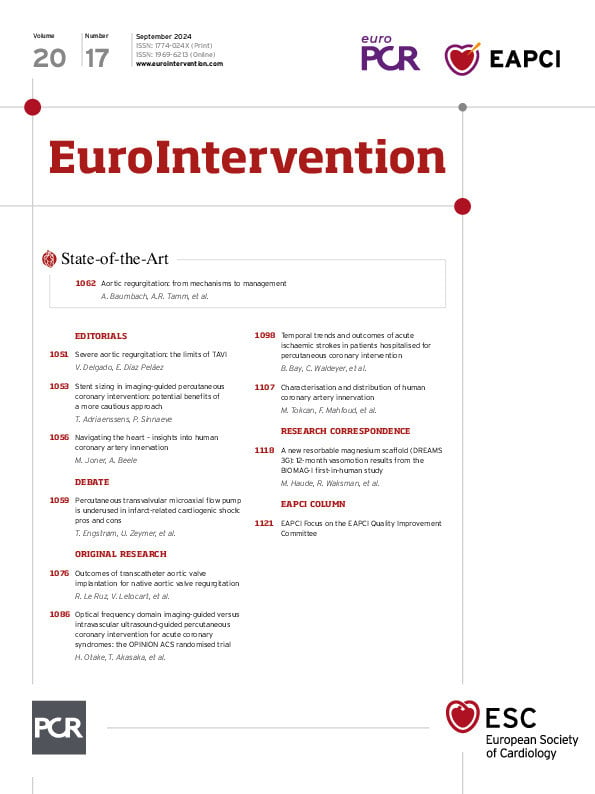What is the role of the committee?
Together with my Co-Chair Lorenz Räber and our committee members, our mission is to identify areas of suboptimal quality in the activity of catheterisation laboratories within EAPCI countries, to propose standards of excellence in interventional cardiology practice, and to promote the accreditation of catheterisation laboratories in alignment with EAPCI training and educational standards. Our main goal is to support cardiac cath lab teams and management in improving patient care and staff safety in the cath lab environment.
How does the EAPCI Quality Improvement Committee benefit the interventional cardiologist?
EAPCI's efforts to integrate and improve the quality of our services across Europe have many potential benefits:
– Standardisation of practice
Establishing standardised practices and protocols in cath labs across Europe.
– Personal professional development
Promoting ongoing professional development for interventional cardiologists.
– Enhanced patient safety
Assessing and implementing robust safety measures, like adherence to radiation/contrast protection protocols, etc.
– Data collection and analysis
Identifying areas for improvement, monitoring performance indicators, and contributing to research and quality improvement initiatives.
– Peer review and collaboration
Sharing best practices and promoting a learning and knowledge exchange culture among cardiologists and cath lab teams.
– Public trust and transparency
Providing transparency and reassurance to patients, healthcare providers, and regulatory bodies.
What has been the biggest achievement of your committee?
One of our most important achievements was developing the accreditation programme for training and education in EAPCI-recognised centres. The programme will ensure that European teaching centres adhere to high standards of patient care, professionalism and interventional practice. It will help teaching centres highlight efficiency, add value to their education and mentoring, and attract fellows and practitioners. EAPCI accreditation will be a requirement for catheterisation laboratories that apply to support fellows who receive EAPCI training grants.
There are a few general rules for centres applying for accreditation:
– Academic and non-academic centres must have been established for at least five years.
– Centres performing coronary-only or coronary and structural interventions are eligible.
– Centres must provide a full range of cardiac services, with organised postprocedural care (i.e., catheterisation laboratories embedded in a cardiology department).
– Centres should already be certified by the appropriate National bodies and/or National Cardiac Society according to country-specific rules. The National Cardiac Society or Working Group should acknowledge and approve the application.
Accredited training centres will be critical in standardising interventional cardiology training programmes. They will establish uniform protocols and competency assessments, ensuring that healthcare professionals across Europe receive consistent training and meet high-quality standards. Certified training centres will help enhance the quality of our services thus improving patient outcomes. Our document, which is still awaiting formal approval, includes, among other things, basic requirements for institutions and equipment, mandatory and recommended procedures to be performed at the teaching centre, and requirements for physician operators. There are separate regulations for coronary-only and structural teaching centres.
What are the ongoing challenges your committee faces?
There are many challenges, the most important of which are adapting EAPCI rules to the specificities of EAPCI member countries to avoid situations in which EAPCI requirements are inconsistent with recognised practice in a given region. Another issue that will certainly be solved in the next term is the overlapping scope of activities and competencies of some committees, hence the initiative to combine them.

